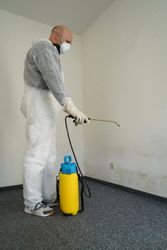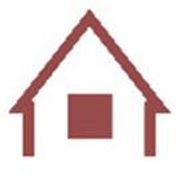Mold Inspection Experts Discuss 5 Common Household Hazards

If your home or business experiences water damage, the excess moisture can put your property and its occupants at risk. Proper drying procedures are the number one defense against mold — without a dry environment, mold spores will continue to spread. There are several types of mold frequently found in homes, and a thorough mold inspection will help you identify what you’re dealing with and streamline the removal process. This guide outlines the five types of mold that often appear indoors after water damage.
Aspergillus
Arguably the most common household mold, Aspergillus can be extremely hazardous to your health, causing inflammation of the lungs and violent allergic reactions. It appears in damp areas in splotchy black patches and should be removed by a mold remediation professional immediately.
Black Mold
 Also known as Stachybotrys chartarum, black mold is another type frequently found in homes; it is also one of the most hazardous to your health. This species produces toxic compounds that cause respiratory ailments, fatigue, and even depression. Like Aspergillus, black mold can usually be found hidden in damp places like old pipes and air ducts, and is identified by its musty odor.
Also known as Stachybotrys chartarum, black mold is another type frequently found in homes; it is also one of the most hazardous to your health. This species produces toxic compounds that cause respiratory ailments, fatigue, and even depression. Like Aspergillus, black mold can usually be found hidden in damp places like old pipes and air ducts, and is identified by its musty odor.
Aureobasidium
Although it is more commonly found outdoors, Aureobasidium is sometimes found indoors as well, especially in homes built on wooden surfaces. It also grows on damp or rotting window frames and caulking, and behind wallpaper. Aureobasidium is pink and black in color, and many people are allergic to it.
Alternaria
Often found in houses that have sustained severe water damage, Alternaria is particularly harmful because it can spread to other homes. Extended exposure to this type can result in asthma attacks and other allergic reactions, so scheduling a mold inspection at the first sign of water damage is recommended.
Cladosporium
Unlike most types of mold, which prefer warm temperatures, Cladosporium can grow in cool areas and is often found in basements or crawl spaces. It also grows on fabrics, carpeting, wooden cabinets, and floorboards. This variety is usually difficult to see but has an easily detected musty odor.
After a flood, removing excess water is only the first step of the recovery process. Identifying and fighting a mold infestation is no easy task, but Arkansas Restoration Services in Russellville is prepared to help. They’ve been helping homeowners in Conway, Johnson, Pope, and Yell counties for over 30 years. Call (479) 967-2018 to schedule a mold inspection and visit them online to learn more about their services.
About the Business
Have a question? Ask the experts!
Send your question

